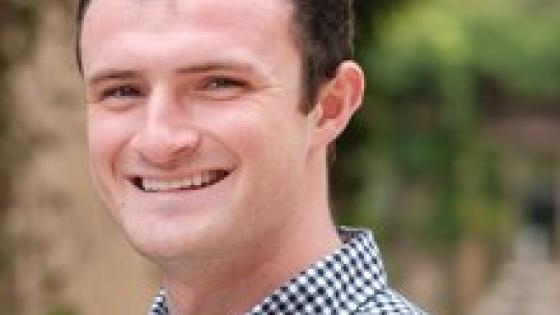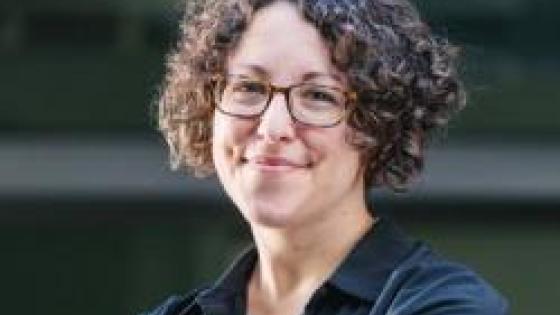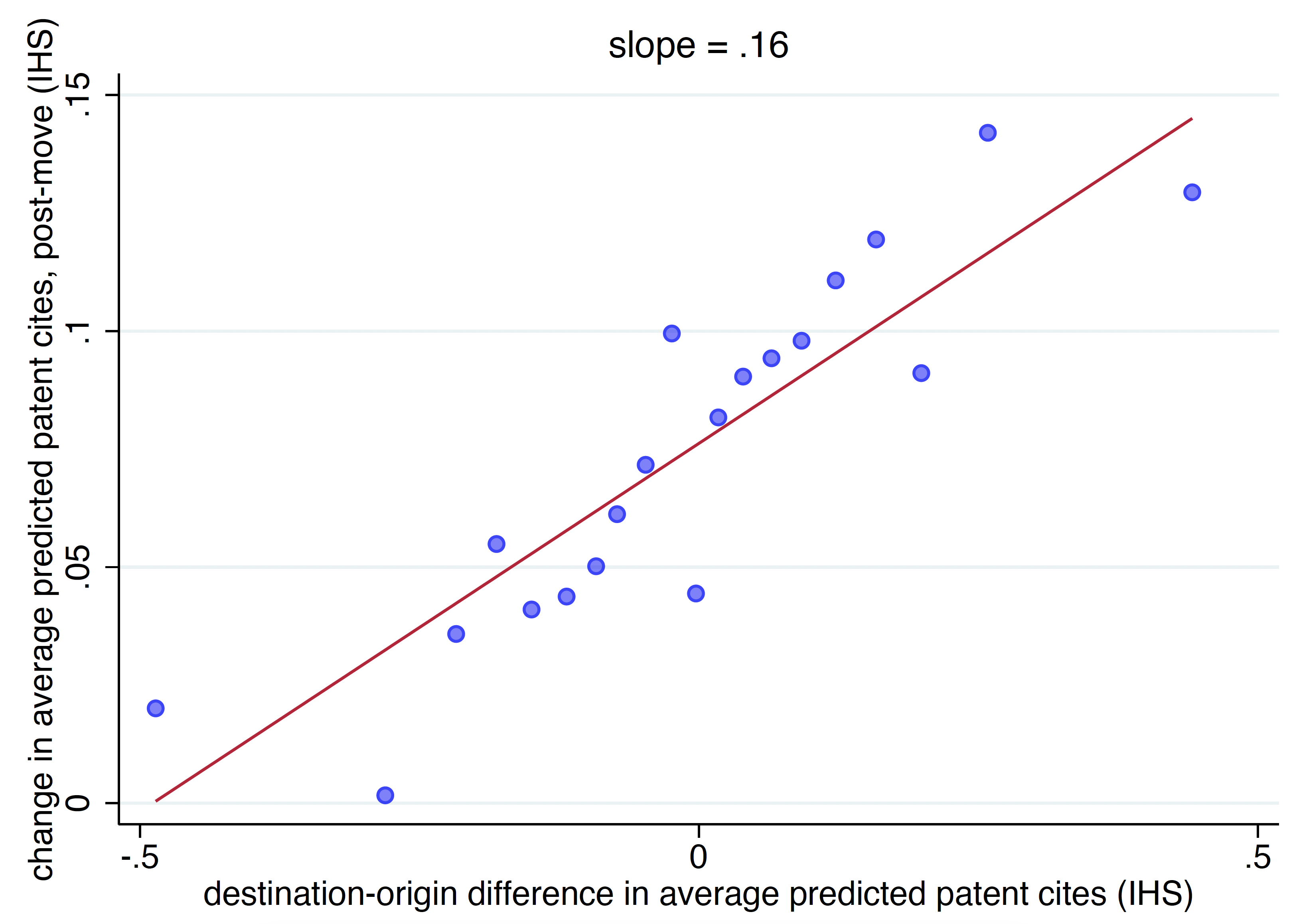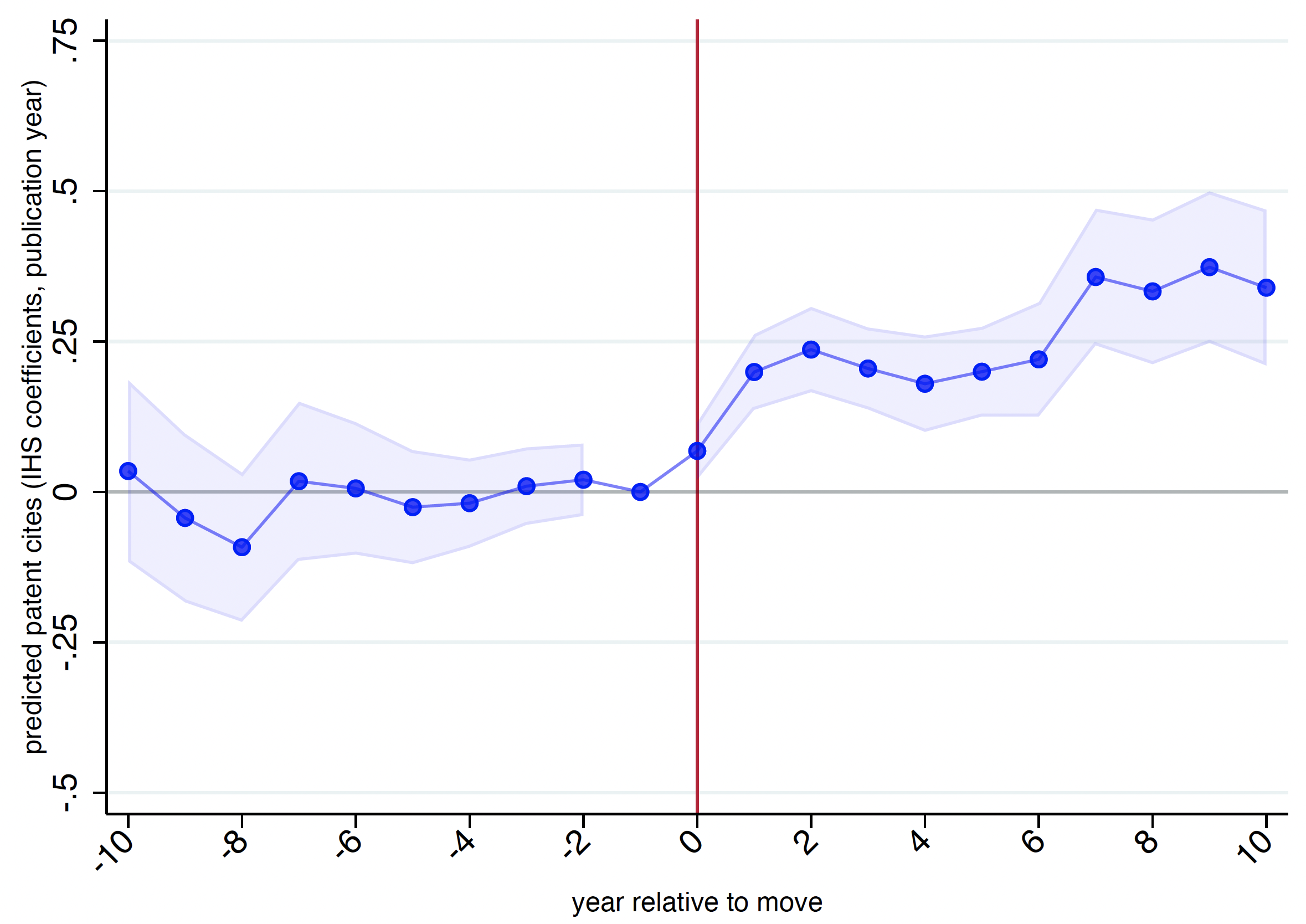Nations around the globe are seeking to promote the creation of new high-technology clusters. Examples include the well-established (Israel’s Silicon Wadi) to the aspirational (Cameroon’s Silicon Mountain). Economists concur that these regional clusters can have powerful effects on innovation: Moretti (2021) finds that researchers who move to such a cluster experience a burst of inventiveness.
A defining characteristic of many innovative clusters is the presence of one or more strong universities. As a result, governments have spent considerable sums promoting academic institutions, from the $10 billion that the Saudi government provided for the endowment of King Abdullah University (in addition to considerable direct expenditures) to the billions that the Chinese government has devoted to the Thousand Talents Program and related efforts to attract returning scientists. The logic behind these initiatives is corroborated by findings in Tahoun et al. (2021) that innovative clusters are often associated with the presence of large universities, and documentation in Jaffe (1989) of localised knowledge spillovers from academic research.
The hard truth, however, is that not all universities are created equal, at least when it comes to generating commercial spillovers. One illustrative pairing is Duke and Stanford: in 2016, both schools spent nearly a billion dollars on academic research, but Stanford had 32 entrepreneurial spinouts compared to Duke’s nine. Many governments have invested enormous sums to build state-of-the-art laboratories and attract top-tier researchers, only to be disappointed when it comes to commercial gains.
It is natural to wonder why there are such differences in universities’ ability to translate cutting-edge research into commercial activity. Is it a consequence of the variety of research topics being pursued at each school? Do different universities attract faculty with differing interests in commercialisation? Or is there something about an institution or location that leads to such differences?
In our recent working paper (Lerner et al. 2024), we attempt to unravel this puzzle by examining cases in which scientists move from one institution to another. In these cases, we can be confident that the individual’s ability remains the same, as does their broad area of research. But does the commercial orientation of the research they undertake change depending on where they move?
To answer these questions, we focus on researchers in the life sciences at academic institutions with a technology transfer office. While many of these researchers have multiple affiliations, their email addresses give a good indication of their primary affiliation. We identify just over 14,000 ‘movers’ who changed academic institutions, and we use these movers to decompose the role of people versus place.
We start by characterising each researcher and each institution by the commercial orientation of their work. We employ a variety of metrics but focus on one that seeks to capture the most useful knowledge spillovers: the number of citations that an academic’s papers receive, not in other papers but in patent filings, either filed by the academic or by others. (Importantly, patent filings must disclose relevant ‘prior art’, which includes not just earlier patents but also scientific publications.)
Our key findings are captured in Figure 1. On the horizontal axis, we characterise the direction of the move by the commercialisation of the research. More specifically, we compare the average extent to which ideas at the old and new institutions are commercialised. If the move is to a school that has a greater propensity to commercialise research, this is a positive number; if to a school with less such activity, a negative one. We depict changes in the propensity of individual researchers’ ideas to be commercialised before and after a move on the vertical axis.
Figure 1 Change in commercialisation propensity by size of move
Notes: This figure is a binned scatterplot that compares an individual’s change upon moving in predicted five-year patent citations with the difference in average institution-level patent citations between their destination and origin institutions. For each mover, we compute two values. First, we separately calculate the average count of IHS predicted five-year citations for papers published pre- and post-move, and report the difference. We call this the change in an individual’s commercialisation level. Second, we generate institution-level differences by subtracting the average count of IHS predicted five-year citations from papers published at the mover’s destination from the average at their origin. We call this value the change in the institution’s commercialisation level. The x-axis displays ventiles of this institution-level change; the y-axis plots, for each ventile, the average change in individual commercialisation. The slope of the line of best fit is reported above the graph. There are 119,338 author years in our sample, coming from the sample of 14,213 movers.
These data suggest a strong positive relationship between the individual researcher’s propensity to commercialise research and average differences in commercialisation propensities across schools. Based on this and similar analyses, we estimate that between 15% and 25% of the difference in the propensity of academics to commercialise their research can be explained by where they are based, as opposed to the nature of their field or their own characteristics.
Figure 2 looks at the timing of these effects relative to the year of the move (year zero in the chart). It reveals that there is little evidence of systematic change in the propensity of an academic’s research to be commercialised before a move. Stated differently, it does not appear that the researchers who ultimately moved to a more commercially oriented school were pivoting toward more applied research in advance of their move. This result is again consistent with the notion that the university where an academic is based matters in determining the commercial orientation of his or her research.
Figure 2 Event study
Notes: This figure is an event study plot that shows the coefficients from a regression where the dependent variable is the inverse hyperbolic sine (IHS) of the predicted count of citations received from patents filed within five years of publication for each of an author’s papers in a given year. Event time is plotted on the x-axis, and the rate of convergence to a mover’s destination mean commercialisation is plotted on the y-axis. The relative year -1 is omitted and normalised to zero. Standard error estimates are denoted by the shaded region around the plotted coefficients. Standard errors are computed by a bootstrapping procedure that randomly samples authors, with replacement. We perform 50 bootstrap iterations to form an empirical distribution of the event study coefficients. The standard deviation of this distribution, for each relative year, is the standard error used to calculate the 95% confidence interval plotted above. There are 119,338 author years in our sample, coming from the sample of 14,213 movers. The red line denotes the researchers’ move years.
A natural follow-on question is the extent to which these effects are driven by the university itself, or by its location. Separating the ‘chicken from the egg’ here is challenging, as the oft-told history of Stanford engineering dean Federic Terman’s role in the creation of Silicon Valley suggests (Leslie and Kargon 1996). That said, our descriptive analyses provide reason to think that both the characteristics of the regions (as captured, for instance, in venture capital activity) and university-level characteristics contribute to these differences.
This work is only a first step toward understanding differences across universities in the propensity to commercialise ideas. Much of the research to date on technology transfer has focused on formal rules, such as royalty sharing and ownership rules (e.g. Jones and Hvide 2016). But our conversations with practitioners suggest the importance of softer considerations as well, ranging from the presence of existing faculty who have engaged in previous commercialisation efforts, to a university’s flexibility in allowing faculty to take leaves of absence to pursue commercialisation activities, to the presence of engaged technology transfer staff. These areas appear to be ripe areas for future research, given both the inherent interest and practical importance of these questions.
References
Jaffe A B (1989), “Real Effects of Academic Research”, American Economic Review 79: 957–70.
Jones, B and H K Hvide (2016), “University Innovation and the ‘Professor’s Privilege’”, VoxEU.org, 22 April.
Lerner, J, H J Manley, C Stein and H Williams (2024), “The Wandering Scholars: Understanding the Heterogeneity of University Commercialization”, NBER Working Paper no. 32069.
Leslie, S W and R H Kargon (1996), “Selling Silicon Valley: Frederick Terman’s Model for Regional Advantage”, Business History Review 70: 435–72.
Moretti, E (2021), “The Effect of High-Tech Clusters on the Productivity of Top Inventors”, American Economic Review 111(10): 3328–75.
Tahoun, A, J Lerner, T Hassan, A Kalyani and N Bloom (2021), “How Disruptive Technologies Diffuse,” VoxEU.org, 10 August.








